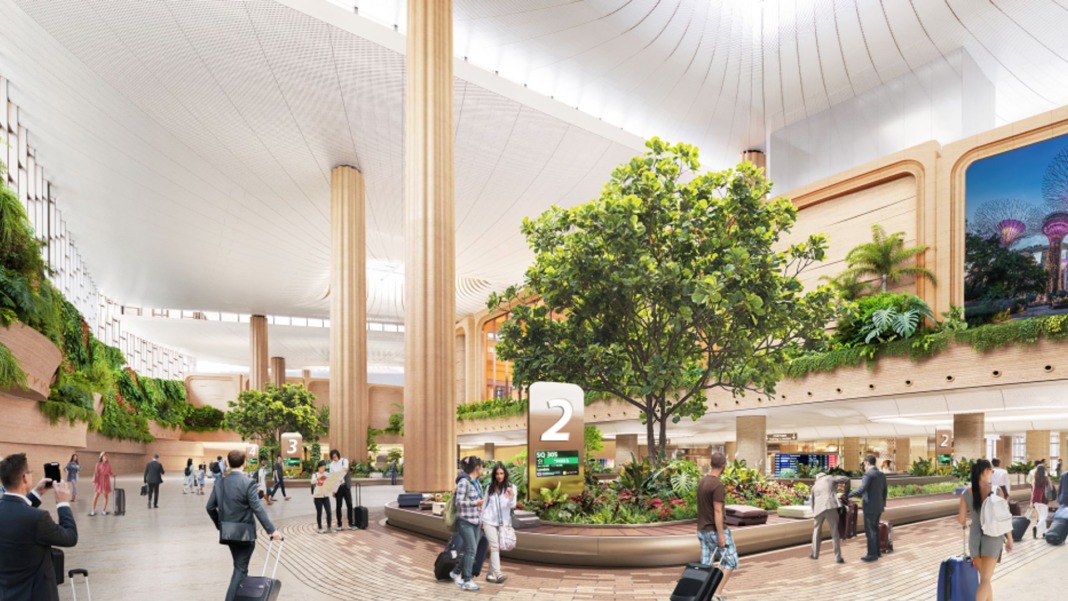Changi Airport Group (CAG) has officially begun construction on the highly anticipated Terminal 5 (T5) at Changi Airport. This marks a major step forward in Singapore’s air travel future. You may have heard about the scale of this project – and it truly is massive. The groundbreaking ceremony was led by the Prime Minister of Singapore, a sign of how important T5 is for the country’s long-term growth.
Once it opens in the mid-2030s, the new terminal is expected to bring together Singapore Airlines (SQ) and Scoot (TR) under one roof. Both airlines will consolidate their operations at T5 during the first phase. With this move, Singapore aims to position T5 as a single, unified air hub. According to CAG, the terminal is set to handle up to 50 million passengers each year once fully operational.
Here’s a closer look at the exciting technology and infrastructure shaping your future travel experience through Terminal 5.
Seamless transport with MRT and ferry links
Getting to and from T5 will be more convenient than ever. The new terminal will feature a “ground transportation centre,” making it a hub for trains, buses, taxis, and more. You can also access T5 directly via two new MRT lines – the Thomson-East Coast Line (TEL) and the Cross Island Line (CRL). These lines are part of Singapore’s award-winning public transport network, offering a smooth connection whether you’re arriving or departing.
The TEL will also link up with the Singapore Rapid Transit System (RTS) Link Terminal at Woodlands North, creating a direct public transport route for travellers coming from or going to Johor Bahru. T5 will also offer ferry services for even more travel options, giving local and international travellers easy access to nearby islands for short breaks or day trips.
Smart systems and sustainable energy
Changi Airport Group ensures that T5 is built with the future in mind. From what’s been shared so far, advanced technologies will support both passenger-facing systems and internal operations. You can expect automated check-ins, baggage handling, and efficient crowd management. CAG aims to ensure that all systems can scale up or down based on travel demand, making operations more flexible and efficient.
One standout feature is the extensive rooftop solar system planned for T5. This will be one of the largest in Singapore and could generate enough electricity to power 20,000 four-room HDB flats for a year. This move helps power the terminal and lowers Changi Airport’s overall carbon footprint, making T5 a more eco-friendly option for air travel.
Shorter walking times and easy navigation
No one enjoys long walks between gates and terminals – and Changi Airport knows this. T5 will feature modern travelators and a new internal rail system, the Automated People Mover (APM), similar to the current Skytrain. This system will link Terminal 5 to Terminal 2 and help you get around faster and more comfortably.
You’ll also benefit from smart design and an intuitive wayfinding inside T5. The layout will guide you naturally towards your gate, whether or not you choose to use the APM. This thoughtful approach to design ensures that even on your first visit, you’ll find it easy to get to where you need to be without confusion.
As construction begins, more details about Changi Terminal 5’s features are expected to emerge. For now, what’s clear is that this terminal is being built to set a new standard in global air travel. Whether travelling for business or leisure, your experience through Singapore’s T5 will be faster, smoother, and more connected than ever.





